What Oprah Taught Us About White Supremacy:
Buffalo Massacre Carries Takeaways for Media
. . . Black Journalists Lose One of Their Own
TV Newsrooms Still Feeling Effects of COVID
COVID Isn’t Over, Despite Our Denial
Pulitzers Reject Diversity Survey Tie-In, For Now
African Rebuked for Behavior at Press Briefing
E&P Sorry for All-White List of Extraordinary Editors
15 Named as Michigan Fellows to Return to Campus
Black Lives Matter Foundation Has $42 Million
View Persists of Asian Americans as ‘Foreigners’
Howard U. Acquires Trove of Gordon Parks Photos
Short Takes: $1 million for Tulsa massacre survivors; catalog of Fox News lies; bird-watching Christian Cooper; transitions from print to broadcast; misinformation in Spanish-speaking communities; reporter confronts man spewing N-word; Ida B. Wells Society interns at N.Y. Times; Robin Turner; Vanessa Williams; Ron Bartholomew; Gary Estwick; Rockell Brown Burton;
Menthol and Black health; Max Robinson; Malcolm X, Panama’s first indigenous people’s radio station; why press freedom is important in Latin America; cynicism in Mexico over Ukraine; Cuba’s new penal code; beating of Lebanese journalist; expulsion by Ethiopia.
Comments
Homepage photo: Outside Buffalo’s Tops Market crime scene (Credit: Derek Gee/Buffalo News)
Support Journal-isms“After interviewing a group of skinheads in 1988, Oprah says she realized she’d allowed them to misuse her platform and create more negative energy in the world. From that day forward, Oprah made the decision to use her show to inform, enlighten and touch people’s lives. Watch as she looks back at that memorable show.” (Credit: Oprah Winfrey Network/OWN)
Buffalo Massacre Carries Takeaways for Media
Oprah Winfrey “hosted an entire panel of skinheads on one of her shows in the late 1980s,” Nicole Hemmer, research scholar and author, reminded us in an opinion piece Thursday in The New York Times. “She hoped the episode would expose their racism; her producers hoped it would be ratings gold.
“The producers were right and Ms. Winfrey was wrong. Halfway through the taping, it occurred to her that the men were using her show to burnish their image and spread their ideas.
‘I realized in that moment that I was doing more to empower them than I was to expose them,’ she said in an interview in 2011, ‘and since that moment, I’ve never done a show like that again.’ ”
“As Ms. Winfrey’s comments suggest, appearing on such shows was part of a deliberate media strategy by white-power groups. In these mainstream appearances, men like [neo-Nazi Tom] Metzger and the ex-Klan leader David Duke showed up in suits, speaking in cleaned-up language in an attempt to present their violent ideologies as mere political differences. . . .”
Winfrey’s comments, considered in light of the mass shooting of Black people Saturday at a Tops supermarket in Buffalo by a white supremacist, speak to the complicity of the news media, in this case television, in spreading the doctrine that led to this tragedy.
Much has been said about the unapologetic role of Tucker Carlson and his Fox News bosses and colleagues in elevating the so-called “replacement theory” into the mainstream.
What to do about that is only one of the issues for the media after the shootings.
The language used to describe Black victims and white suspects has been called into question. So has the need to rein in the hate spread on social media — especially in light of the possible takeover of Twitter by billionaire “free speech” advocate Elon Musk.
There is the need for a corrective education of the public on the history, contributions and humanity of people of color. The headline on a column by Tonyaa Weathersbee in the Memphis Commercial Appeal was “The Buffalo shooting shows Tennessee lawmakers banned the wrong race theory.”
Others have cited the continuing need to reverse the decline in local news coverage.
“Between 2005 and 2020, right-wing domestic extremists were involved in more than three hundred plots and violent incidents,” Brendan Fitzgerald wrote last fall for Columbia Journalism Review, which he referenced in a new piece on Thursday.
“During the same period, thousands of local newsrooms closed, and local journalism employment plummeted. The rise in domestic extremism and decline of local news ‘means a lot less coverage of local hate and extremist events,’ Heidi Beirich, an extremism expert, told me last year. ‘It leads to an undercount in general of how much extremist activity is happening across the US.’ Coverage of domestic terror is incomplete without deep knowledge of the communities victimized by it. As Chris Jones, a reporter who covers domestic extremism in Appalachia, told me, ‘If you don’t understand the place where something happens, you’re preventing yourself from being able to understand why it happens’. ”
Gun control has been an obvious issue for editorialists as well as politicians, but some have also used Buffalo’s trauma to raise the issue of Black mental health.
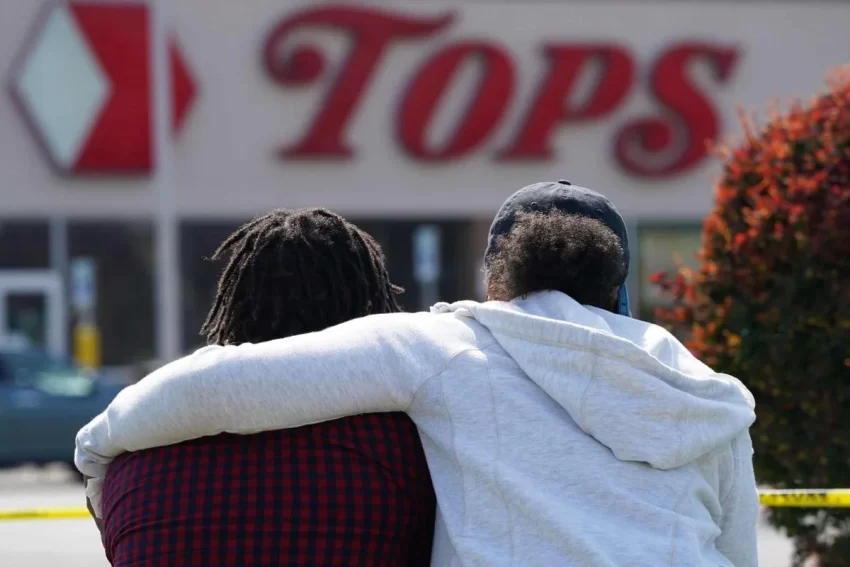
There “has been debate stretching decades that extreme racism warrants its place in the DSM,” a reference to the American Psychiatric Association’s Diagnostic and Statistical Manual of Mental Disorders, Scott Scanlon wrote in the Buffalo News. “Association officials rejected the notion, ‘arguing that because so many Americans are racist, even extreme racism in this country is normative – a cultural problem rather than an indication of psychopathology,’ the Western Journal of Medicine reported in 2002.”
Anxiety “and depression more than tripled in the Black community from 8% in January 2019 to 35% by June 2020,” Scanlon wrote, quoting Annika Olson, assistant director of policy research at the Institute for Urban Policy Research and Analysis at the University of Texas at Austin.
On Monday, the National Association of Black Journalists said in a statement, “The coverage we have seen around this story reveals there is still much work to be done in how newsrooms report on issues affecting the Black community and how unconscious bias still plays a role in the way suspects and victims are portrayed in the media. We expect every newsroom in America to have policies, procedures and people in place at all times to ensure coverage is fair, sensitive, thoughtful and accurate.
“For example, readers of the Associated Press recently pointed out on social media how the news organization previously referred to gun violence victim Michael Brown as an ’18-year-old Black man,’ but Payton Gendron, the gunman in the Buffalo shooting, was initially described as an 18-year-old ‘white teenager.’ This type of reporting helps to glorify stereotypes of Black young men and desensitizes their humanity and youth. All too often, white suspects are treated much more carefully in the media than Black victims. . . .”
However, on Tuesday NABJ praised the AP after the news cooperative forwarded its guidance to staffers:
“teen vs. man or woman: We use the terms man or woman for those 18 and older. It is important to be consistent in how we describe people of similar ages. The news media in general has been justifiably criticized for sometimes using man/woman to describe a Black 18-year-old, but teen for a white 18-year-old. The 18-year-old can also work for a person of that age of any race. Again, be consistent.”
Carlson’s enthusiasm in spreading the “replacement theory” — that Jews, people of color and immigrants plan to replace white Americans — was outlined in the recent New York Times series on the top-rated Fox host.
But Carlson is a top-money maker for Fox and its owners have stood behind him. Writing for Media Matters for America, Matt Gertz called attention Monday to the complicity of businesses that advertise on that network.
“As I wrote two weeks ago: ‘The Murdochs, Carlson, and their colleagues are not going to stop. They’re going to keep promoting white nationalism. And everyone in business with Fox should be clear-eyed that their ongoing participation is part of the network’s strategy’.”
“Media buyers and advertisers need to decide how comfortable they are with that.”
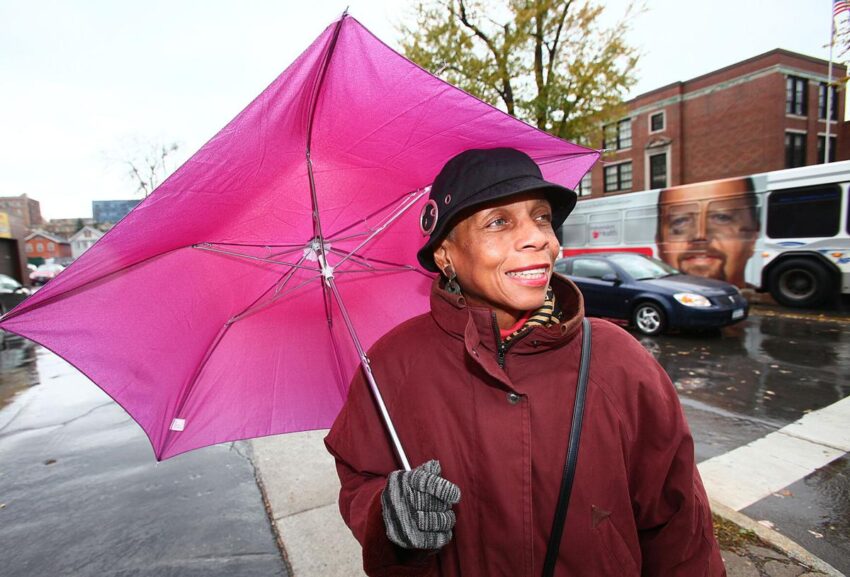
. . . Black Journalists Lose One of Their Own
“It was late Tuesday morning, and Al-Nisa Banks was on deadline to close her weekly paper, The Challenger Community News, a family-owned publication operated by Black women that has been highlighting the voices of African Americans in Buffalo and other parts of Western New York for nearly 60 years, before it hits newsstands on Thursday,” Alexandra E. Petri wrote Tuesday for The New York Times (scroll down).
“One of its distribution points is the Tops market where Saturday’s racist shooting left 10 people dead and three injured. Among those killed was Katherine Massey, a freelancer for The Challenger who Ms. Banks said was community-minded and a prolific writer. Her last column addressed gun violence and regulations.
“Ms. Banks, who is now the editor and publisher, has been at the paper, which has a staff of about 12 and a network of contributors, for four decades. ‘This area is no stranger to racism,’ Ms. Banks, 75, said. Saturday was another salvo, she added.
“For Ms. Banks, the magnitude of the moment and the responsibility The Challenger has to the public feels particularly heightened. The Challenger plans to delve more into history’s role in Saturday’s massacre and bring the story full circle.
“The newspaper plans to run the obituaries for the victims at no charge, she said, and provide space for the public to continue the conversation and hold officials accountable. ‘We will be listening to the promises people make, and stay on top of those,’ Ms. Banks said.
“For 44 years, Eva M. Doyle has been writing a column each week for The Buffalo Criterion, a weekly newspaper that is the oldest Black-owned publication in Western New York, covering everything from the impact of illegal guns to education issues. Her children know not to call her on Tuesdays when she’s racing to file, she said. But writing this week’s column was especially difficult.
“ ‘It’s hard for me to get started right now, because all of this is so much in my mind, and what happened to these people,’ Ms. Doyle, 76, a retired teacher, activist and historian who is known in the community as Mother Doyle, said in a phone interview on Monday. She plans on writing about the victims, in particular Ms. Massey. ‘I am going to write it, but it’s going to take me a while to get my thoughts together.’ ”
- Lorraine Ali, Los Angeles Times: Tucker Carlson hits a dangerous new low in his response to the Buffalo shooting
- Wayne Bennett: Field Negro: There will be more replacement theory killers. And no one will be held accountable.
- Ryan Bort, Rolling Stone: Tucker Carlson Tries, and Fails, to Distance Himself From Buffalo Shooter’s Manifesto
- Jamelle Bouie, New York Times: The Slaughter in Buffalo Hasn’t Quieted the Great Replacement Caucus
- Donna Brazile, The Grio: Buffalo Mass Shooting: How do we end the epidemic of hate-driven murders?
- Audra D. S. Burch and Luke Vander Ploeg, New York Times: Buffalo Shooting Highlights Rise of Hate Crimes Against Black Americans
- Nicholas Confessore, New York Times: Schumer calls on Murdoch and Fox News executives to stop amplifying replacement theory.
- Brian Contreras, Los Angeles Times: After Buffalo, will social media companies finally ban great replacement theory?
- Elvia Díaz, Arizona Republic: Why is Rep. Liz Cheney the only Republican telling the truth about the Buffalo shooting?
- Editorial, Buffalo News: Buffalo massacre proves again why military-style weapons must be kept off the streets
- Editorial, Buffalo News: Politicians on left and right must speak out against the lie of ‘replacement theory’
- Editorial, Philadelphia Inquirer: ‘Replacement theory’ moves from fringe to reality with Buffalo mass shooting
- Matt Gertz, Media Matters for America: Latest white supremacist massacre is a decision point for Fox advertisers
- Robin Givhan, Washington Post: A weekend of violence punctuates generations of hate
- Renee Graham, Boston Globe: With the Buffalo massacre, Fox News has blood on its hands — again
- Emil Guillermo, Asian American Legal Defense and Education Fund: Buffalo victims could have been Asian American under “replacement theory”
- Haleluya Hadero, Associated Press: Buffalo shooting: Sites yank videos faster, but not by much
- Roy S. Johnson, al.com: Buffalo killings: We don’t want to replace y’all, we just want to live
- Tom Langmeyer, Radio Ink: How One Music Station Covered The Buffalo Massacre
- Chad Dion Lassiter, Philadelphia Inquirer: Buffalo shooting a reminder of what happens when white men get radicalized
- Michael Meyers, Chicago Tribune: The ACLU and NAACP are wrong to blast Elon Musk for making Twitter a place of free speech (May 9)
- Michele L. Norris, Washington Post: White Americans must speak out against white supremacy
- Will Oremus, Washington Post: What a racist massacre tells us about free speech online
- Ciara O’Rourke, Poynter Institute: A fake Twitter account posing as CBS News shared false information about the Buffalo shooting
- Justin Peters, Slate: Tucker Carlson Is Deflecting
- Eugene Robinson, Washington Post: The Black victims of the Buffalo shooting were killed by white supremacy
- Margaret Sullivan, New York Times: A racist theory may have driven the Buffalo tragedy. The Murdochs thrive on it.
- Rod Watson, Buffalo News: If we can’t stop shooters, at least take away their protection
- Tonyaa Weathersbee, Memphis Commercial Appeal: The Buffalo shooting shows Tennessee lawmakers banned the wrong race theory
- Erik Wemple, Washington Post: Tucker Carlson ducks his own potential link to the Buffalo shooting
- Calvin Woodward, Associated Press: Violent death in America stalks ordinary walks of daily life
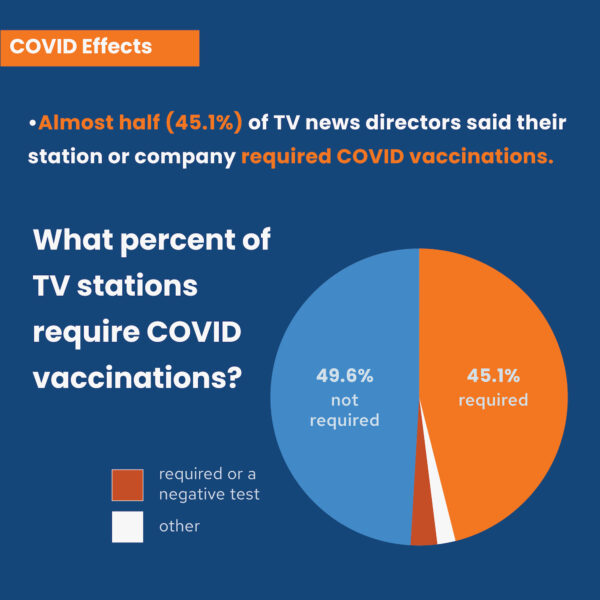
TV Newsrooms Still Feeling Effects of COVID
“More than two-thirds of TV news directors say their newsrooms are still experiencing significant impacts of COVID, whether in permanent changes to their newsroom, budget cuts, staff size or remote work. That is according to the latest RTDNA/Newhouse School at Syracuse University Survey,” the Radio Television Digital News Association reported Tuesday.
“Just 30% of TV news directors say that coronavirus is not having a major impact on their newsrooms anymore. Still, what a difference a year (or so) makes; that’s up from 6.2% a year ago. More than a third of TV newsrooms have seen permanent physical changes to deal with COVID, and nearly a third still have at least some staff working mostly remotely. Almost 19% have had (or have) budget cutbacks, and nearly 18% have fewer newsroom staffers — down from more than 27% a year ago.
The survey, conducted by Bob Papper, also found:
“Overwhelmingly, TV newsrooms have changed procedures in order to protect staff from COVID. Overall, 92.9% say they’ve made changes. All market sizes are above 90% except the smallest (151+). The bigger the staff, the more likely that the newsroom has made changes. In fact, every newsroom with 51+ staffers has made changes.
“At the top of the list, nearly half the newsrooms (46.2%) have mandated social distancing. That includes remote working, virtual meetings, crews riding separately, social distancing in the station, setting up physical barriers or plexiglass, and not allowing visitors to the station.
“More than a quarter (26.6%) have mandated masks in the station.
“More than one in five (20.6%) require vaccinations, require vaccinations for any visitors, mandate daily or regular testing or health assessments of the staff or require quarantining for any illness.
“Six percent (6.1%) do special cleaning or operate air purifiers. . . .”
The RTDNA/Newhouse School survey was credited to Papper, an adjunct professor of broadcast and digital journalism at Syracuse University who has worked extensively in radio and TV news, and Keren Henderson, associate professor of broadcast and digital journalism at Syracuse.
“Help me understand something here,” reporter William Brangham of the “PBS NewsHour” said to Dr. Eric Topol, “because there seems to be a real disconnect. . . . ” (video)
COVID Isn’t Over, Despite Our Denial
As many journalists gather indoors for their summer conventions, medical experts are warning that too many Americans are in denial about the continuing COVID pandemic and assume that being “vaxxed and boosted” means they no longer have to worry.
One such expert, Eric Topol, MD. director and founder of the Scripps Research Translational Institute, appeared Monday on the “PBS NewsHour.”
“So the country is trying to find a way to reckon with this one million deaths, and yet these new variants are showing up,” reporter William Brangham said to Topol. “It’s clearly that this virus is not done with us yet. When you look out at the pandemic today, what is it that most concerns you?”
“The problem we have is this illusion or deception that the pandemic is over, when, in fact, these variants that we’re seeing are coming at a much faster clip,” Topol replied. “There’s an accelerated evolution of the virus. And these are more troubling variants. They’re not more mild.
“In fact, they have more immune escape. So they’re transmitting at levels that is really inconceivable and starting to approach the level of measles, one of the most spreadable pathogens we have ever encountered.
“So we have trouble right now. As you mentioned, we are seeing at least 600,000, 700,000 real cases a day, and, likely, it’s going to continue to increase in this country as we confront this so-called BA.2.12.1 variant, one of the several of the Omicron family. . . “
Topol also said, “we have counted on our vaccines that gives us this 90, 95 percent protection from severe disease, hospitalizations and deaths. But that’s slipping now.
“And we’re in a denial state that it’s now down to 85, 80 percent. That’s actually a big drop, because the gap is, instead of 5 percent, we’re talking about fourfold more people who might go on and get severe disease, even being vaccinated with one or two boosters.
“This is what is a real problem that we’re not confronting right now. . . .”
- Ana Arana and Kyra Senese, Palabra, National Association of Hispanic Journalists: Chicago-area COVID victims are misidentified as other races, costing Latinos urgent public health resources
- Andrea Castillo and Jie Jenny Zou. Los Angeles Times: They were sick and dying in ICE custody. The agency released them, avoiding responsibility
- Editorial Board, Buffalo News: Covid is still here. Patience and vigilance remain essential. (May 6)
- James B. Ewers Jr. Ed.D., Houston Forward Times: COVID-19 Is Not Over! We Cannot Drop Our Guard
- Paul Farhi, Washington Post: Yes, a lot of White House correspondents’ guests are testing positive (May 5)
- Michael Gerson, Washington Post: Too many Americans are still in covid denial
- Noah Higgins-Dunn, CNBC: Here’s how Covid-19 transitions from a pandemic to endemic (March 18)
- Jack Holmes, Esquire: So We’re Not Gonna Mention the Gridiron Dinner Turned Out All Right? (May 12)
- “The Inquiry,” BBC: How do pandemics end?: Covid-19 restrictions are easing and borders are opening around the world. But have we really only reached the end of the beginning?
- Betsy Klein, CNN: White House warns the US can’t buy updated Covid-19 vaccines ‘for every American who wants one’ without more funding
- Sharon LaFraniere, Michael D. Shear and Sheryl Gay Stolberg, New York Times: Biden Health Officials Warn of Substantial Increase in Virus Cases
- Annie Ma and Hannah Fingerhut, Associated Press: Racial Split On COVID-19 Endures As Restrictions Ease In U.S. (April 29)
- New York Times: One Million Deaths: The Lost Americans (special report)
- Katie Robertson, New York Times: The New York Times has paused its June 6 return to office plan “until conditions improve,” as Covid cases spike in NYC (Twitter)
- Barry Saunders, Saunders Report: Uh oh, I feel good: Something must be wrong!
- Alexa Spencer, Word In Black: Long COVID Could Do Serious Damage in the Black Community (May 12)
- Ed Yong, the Atlantic: So, Have You Heard About Monkeypox?
- Ed Yong, the Atlantic: What COVID Hospitalization Numbers Are Missing
Pulitzers Reject Diversity Survey Tie-In, For Now
The administrator of the Pulitzer Prizes has rejected, for now, an appeal from 160 organizations and more than 220 individuals that it add language requiring newsrooms to participate in the News Leaders Association’s annual diversity survey (or similar) by 2024 in order to be considered for its journalism awards.
In an April 28 letter, Jon Schleuss, president of the News Guild, wrote on behalf of the signatories: We ask that “the Pulitzer Prizes plan to announce its intent on or before the 2022 award announcement on May 9, 2022.”
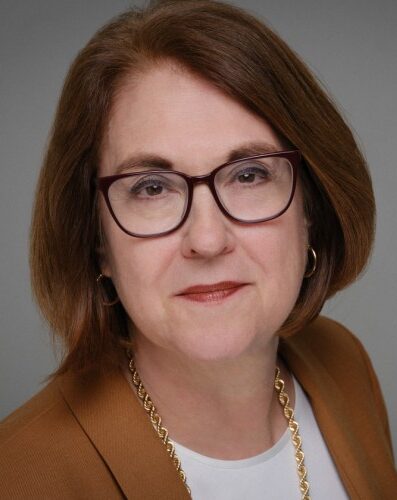 However, Marjorie Miller (pictured) wrote the groups on May 2 that the Pulitzer board could not act that quickly.
However, Marjorie Miller (pictured) wrote the groups on May 2 that the Pulitzer board could not act that quickly.
The organizations’ open letter was a response to the low participation by news organizations in the News Leaders Association’s annual newsroom diversity survey. NLA sought responses from 2,500 news organizations for this year’s survey, just 303 newsrooms responded, as Sarah Scire reported last month for Nieman Lab.
Miller wrote, “Like most leaders in journalism, we at the Pulitzer Prizes want to see more diversity and transparency in news organizations and support inclusivity efforts. Participation in diversity surveys contributes to the spirit of growing a diverse journalism workforce and demonstrates a commitment to transparency.
“That said, the Pulitzer board is not in a position to decide in the next week whether it would sign onto adding such a criteria to its awards requirements. To even consider doing so would mean modifying the rules of entry, which is not something the 106-year-old organization does lightly or hastily. The request will be circulated to board members for possible consideration during our summer committee meetings on rules, and if there is support for it, to add to the fall meeting agenda.
“Meanwhile, I am in touch with NLA Executive Director Myriam Marquez. I understand that the survey itself is undergoing review, so perhaps the timing is not opportune on both sides. Myriam and I will remain in contact and will keep interested parties informed.”
 Schleuss (pictured) and Sisi Wei (pictured, below), co-director of Open News, who organized the letter, responded with dismay.
Schleuss (pictured) and Sisi Wei (pictured, below), co-director of Open News, who organized the letter, responded with dismay.
“Several of the signers met,” they wrote on May 6. “We were all dismayed that the Pulitzer board couldn’t even commit to something as simple as considering the issue during the summer meeting. Instead, it was only willing to possibly consider talking about it during the summer, and if it were talked about, possibly then speaking about it in the fall. I hope you can understand when we read that, it seemed like Pulitzers weren’t taking this request from hundreds of journalism organizations and journalists seriously or respectfully.
 “Our hope was that by setting the criteria a year and a half into the future we’d give the Pulitzer board more than enough time to take this issue up and give it the consideration it deserves. I understand an organization as old as the Pulitzers does not make decisions lightly, however, our industry has made a lot of progress over the last century because people decided to make changes. And things need to continue improving.
“Our hope was that by setting the criteria a year and a half into the future we’d give the Pulitzer board more than enough time to take this issue up and give it the consideration it deserves. I understand an organization as old as the Pulitzers does not make decisions lightly, however, our industry has made a lot of progress over the last century because people decided to make changes. And things need to continue improving.
“If the Pulitzer board genuinely wants to see more diversity and transparency in news organizations and support inclusivity efforts, then we ask that it take this step with us, and act.
“We hope that the board changes its mind and commits to at least taking the very easy step of considering the criteria during its summer meeting. You and the board will be hearing more from us on that soon.
“The Pulitzers should be the highest award for journalism in the U.S. and as we wrote back on April 22,’ ‘by implementing this new criteria, the Pulitzers would honor not only great journalism, but journalism from newsrooms willing to be accountable to the public.’ ”
- Association of American Editorial Cartoonists: Pulitzer Prize Cartoonists Pen Protest Letter to Pulitzer Board
- George Chidi, decaturish.com: George on Georgia – Rooms So White
- Roy Peter Clark, Poynter Institute: The best Pulitzer Prize leads of 2022 (May 12)
- Brian Stelter, CNN: Pulitzer Prize judges looked beyond national newsrooms for journalism’s top prizes (May 9)
- Erik Wemple, Washington Post: Pulitzers bathe journos in adjectival glory: ‘Courageous, prescient and sweeping’ (May 13)
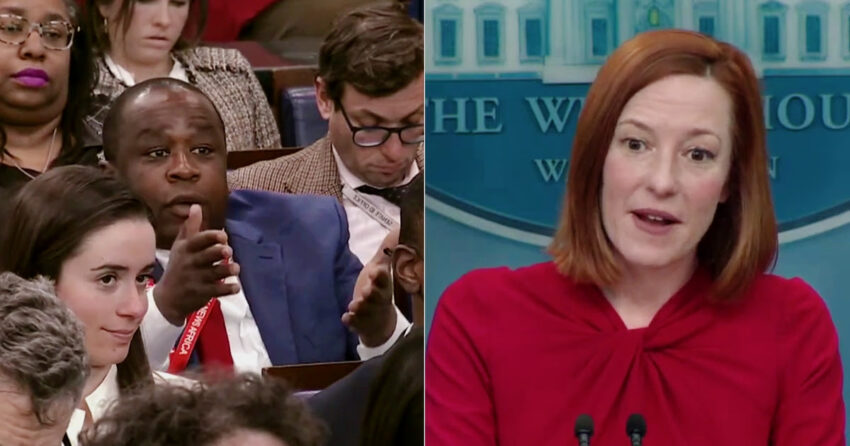
African Rebuked for Behavior at Press Briefing
“A reporter who interrupted Friday’s White House press briefing has been threatened with suspension or expulsion from the White House Correspondents Association were he to do the same again,” Jackson Richman reported Monday for Mediaite.
“During Jen Psaki’s last press briefing as White House press secretary, Simon Ateba of Today News Africa twice interrupted and called on Psaki to call on the reporters in the back rows. He interrupted the Associated Press’ Zeke Miller and ABC News’ Mary Bruce.
“In an email to Ateba, obtained by Mediaite, White House Correspondents Association President and CBS News Radio White House Correspondent Steven Portnoy chided him on Monday for the interruptions.
“ ‘Your disruptive behavior at last Friday’s briefing interrupted your colleagues and reflected poorly on the press corps,’ he said. ‘There is no right of any reporter to be called on by any official. Preventing your colleagues from asking their questions is no way to seek relief.’
“Portnoy warned that Ateba would be suspended or expelled were he to repeat his behavior from Friday. . . “
In a statement to Mediaite, Ateba said, “I received the email from WHCA’s President Steven Portnoy with a heavy heart. I am the victim here and I am being treated so unfairly by WHCA. It is sad and it is heartbreaking. America is the greatest country in the world and no country comes even close. Here in the United States, press freedom is respected, or so I thought, or so I was made to believe.”
Ateba wrote earlier that despite what readers might see elsewhere, “The true story is that of discrimination, that of looking down on some people, ignoring them, behaving as if they don’t have anything to say even when Africa is being discussed in the room, the true story is about perpetuating inequality, elevating some people over others, preaching equity loudly to the country but practicing something different in the briefing room.”
- Stacy M. Brown, National Newspaper Publishers Association: Erica Loewe Helps to Open Doors of the White House to the Black Press (May 11)
- April Ryan, The Grio: Inside Karine Jean-Pierre’s historic first day as White House press secretary: ‘Representation matters’

E&P Sorry for All-White List of Extraordinary Editors
The owner and publisher of Editor & Publisher is apologizing for a list of “editors extraordinaire” that included no people of color.
Mike Blinder told readers, and reiterated in a telephone call with Journal-isms, that “we at E&P will immediately reassess, scrutinize, and improve our nomination process of these special features, so we do our utmost to ‘cast a wider net’ to uncover those of every ethnicity who [deserve] recognition. I also welcome any suggestions that you may have that may improve that process as well. My phone and email are below. . . .”
Blinder and his wife, Robin Blinder, who edits the magazine and website, explained that the list of 15 editors was selected through reader nominations — and he had no way of being certain of anyone’s race or gender.
“It is an open nomination, meaning anyone can nominate anyone. We then look at the info in a spreadsheet,” Mike Blinder messaged.
“Here is the nomination page (with the form now removed since nominations closed.
“Here is the actual form we used that was embedded on the page.
“All information then populated a [Google] sheet we monitor
“Prompted by all of the conversation now taking place in [social] media, over the weekend I went back and reviewed the many nominations we received in April of 2022 for this year’s inaugural salute for industry editors. [Based] solely on what I could see via the faces I could find of each nominee, NOT ONE NOMINATION THAT E&P RECEIVED WAS FOR A PERSON OF COLOR!,” Mike Blinder continued.
Retired editor Wanda S. Lloyd offered this response for Journal-isms: “”E&P Publisher Mike Blinder should know that when you seek feedback from a universe of people — in this case E&P subscribers — he should first know a bit more about his audience.”
Speaking as “one of the news industry’s decades-long advocates and trainers for diversity,” Lloyd continued, “we know that many white editors often are not focused on the contributions of people of color, even their own peers. We also know that, while the universe of editors of color is growing, that number is still small.
“Surely E&P should know that by reaching out to the journalism associations for journalists and leaders of color, there are resources to help seed the list of nominations,” Lloyd added. “Why is that still a mystery 54 years after the Kerner Commission report informed the nation about the lack of media diversity?”
Mike Binder said, “I will speak for free at any conference,” noted that the publication recently began a diversity column by Larry Graham, and said the publication is contemplating a special issue on the news industry’s diversity challenges.
- Sirwan Kajjo, Voice of America: Diversity, New Perspectives Are Applied to Middle East Coverage (April 28)
- Sachi Kobayashi, Current: How public media can make good on its commitment to diversity
- Kyra Kyles, Current: Diversify or die out: Five steps for creating a newsroom that reflects America (May 3)
- Gregory Lee Jr., Editor & Publisher: Building better newsrooms (April 8)
- Najja Parker, Angel Brooks, Shawn McIntosh, Holley Hughes, Meghan Claar and Leigha Hubbard, Better News: How The Atlanta Journal-Constitution is reaching Black audiences through its Unapologetically ATL newsletter
- Rebecca Sun, Hollywood Reporter: How the Current Wave of More Inclusive Leadership Is Changing Newsrooms

15 Named as Michigan Fellows to Return to Campus
The University of Michigan Tuesday named the Knight-Wallace Journalism Fellows for the 2022-2023 academic year, in which the 15 fellows are returning to the campus for the first time in two years.
“The return to the residential program includes a focus on individual journalism projects,” the announcement said. “The 2022-2023 Fellows’ pursuits range from investigating pressing global crises including forced migration, the constraints of nationhood, attacks on press freedom and climate change to persistent domestic issues including inequitable policing, broken mental health systems and the exploitation of private information in the digital marketplace. . . .”
The announcement also said, “Fellowship support includes a $75,000 stipend over eight months, the opportunity to audit courses across the university, professional development workshops and private seminars with journalism leaders and world-renowned experts.”
The 15 are: Atossa Araxia Abrahamian, an independent journalist; María Arce, an Argentinian journalist and multiplatform director for El Vocero in Puerto Rico; Elaine Cromie, a Shimanchu and Puerto Rican photojournalist based in Detroit; Mary Cuddehe, an independent journalist and magazine writer; Orlando de Guzman, video journalist and filmmaker; Makeda Easter, freelance journalist; Jarrad Henderson, independent filmmaker, educator and visual journalist at USA Today.
Also, Lindsay Kalter, independent health journalist; Chris Marquette, reporter for CQ Roll Call; Meg Martin, freelance editor and a former managing editor for regional news at Minnesota Public Radio; KyeongRak Min, reporter for Korea’s Yonhap News Agency; Antoni Slodkowski, a Polish journalist based in Tokyo for the Financial Times; Alexandra Talty, multimedia journalist and former Middle East correspondent; Asadullah Timory, an Afghan reporter who worked for The New York Times and was evacuated after the Taliban takeover in August 2021; and Masrat Zahra, an independent photojournalist and documentary photographer from Indian-administered Kashmir.
“We have, you know, all these conversations about equal pay for black women,” co-founder Patrisse Cullors said. “That should be happening inside the movement too and I don’t like that I didn’t lead in that way.'” (Credit: YouTube)
Black Lives Matter Foundation Has $42 Million
“The foundation started by organizers of the Black Lives Matter movement is still worth tens of millions of dollars, after spending more than $37 million on grants, real estate, consultants, and other expenses, according to tax documents filed with the IRS,” Aaron Morrison reported Tuesday for the Associated Press.
“In a new, 63-page Form 990 shared exclusively with The Associated Press, the Black Lives Matter Global Network Foundation Inc. reports that it invested $32 million in stocks from the $90 million it received as donations amid racial justice protests in 2020. That investment is expected to become an endowment to ensure the foundation’s work continues in the future, organizers say.
“It ended its last fiscal year – from July 1, 2020 to June 30, 2021 – with nearly $42 million in net assets. The foundation had an operating budget of about $4 million, according to a board member.
“The tax filing shows that nearly $6 million was spent on a Los Angeles-area compound. The Studio City property, which includes a home with six bedrooms and bathrooms, a swimming pool, a soundstage and office space, was intended as a campus for a Black artists fellowship and is currently used for that purpose, the board member said.”
Morrison also reported, “BLM co-founders Patrisse Cullors, Alicia Garza and Ayọ Tometi had pledged to build a decentralized organization governed by the consensus of BLM chapters. But just three years into existence, Cullors was the only movement founder involved in the organization.”
After Tuesday’s story was published, Fox News and the Daily Mail ran pieces with such headlines as “BLM co-founder Patrisse Cullors says group flooded with ‘White guilt money‘” (Fox News) and “Black Lives Matter co-founder Patrisse Cullors claims her mistakes with $90M in ‘white guilt money’ are being weaponized against her and she didn’t profit from $6M LA mansion and $6M Toronto ‘arts center‘” (Daily Mail).
Morrison’s story continued, “This is the BLM foundation’s first public accounting of its finances since incorporating in 2017. As a fledgling nonprofit, it had been under the fiscal sponsorship of a well-established charity, and wasn’t required to publicly disclose its financials until it became an independent, 501(c)(3) nonprofit in December 2020.
“The tax filing suggests the organization is still finding its footing: It currently has no executive director or in-house staff. Nonprofit experts tell the AP that the BLM foundation seems to be operating like a scrappy organization with far fewer resources, although some say Black-led charities face unfair scrutiny in an overwhelmingly white and wealthy philanthropic landscape.
“Still, its governance structure makes it difficult to disprove allegations of impropriety, financial mismanagement and deviation from mission that have dogged the BLM foundation for years, one expert said. . . .
“ ‘This 990 reveals that (the BLM foundation) is the largest Black abolitionist nonprofit organization that has ever existed in the nation’s history. What we’re doing has never been done before,” said Shalomyah Bowers, who serves as the foundation’s board secretary.
“We needed to get dollars out to grassroots organizations doing the work of abolition, doing the work that would shift the moral tide of this world towards one that does not have or believe in police, prisons, jails or violence,” he said.
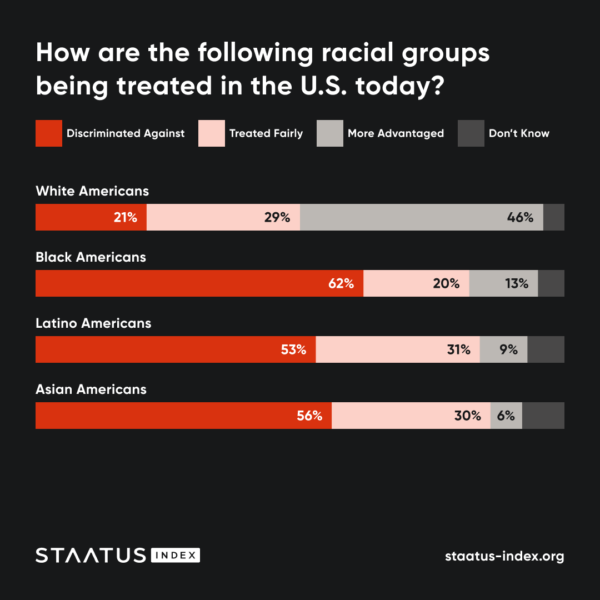
View Persists of Asian Americans as ‘Foreigners’
An increasing percentage of Americans see Asian Americans as “perpetual foreigners,” and when asked, 58 percent of respondents could not name a single prominent Asian American figure, Casey Mendoza wrote Tuesday for Newsy, reporting on results from a STAATUS Index survey tracking perceptions and stereotypes of Asian Americans in the United States.
The STAATUS (for Social Tracking of Asian Americans in the U.S.) study [PDF] also said, “Only 29% of Asian American respondents (vs. 61% of white respondents and 33% of Black respondents) completely agree that they feel that they belong and are accepted in the U.S., the lowest of all racial groups.”
“The fact that the majority of Americans couldn’t name another prominent Asian American was troubling, especially when our vice president is Asian American,” said Russell M. Jeung, co-founder of Stop AAPI Hate, said in the Newsy report. “It just speaks to the need to educate the broader community to further raise awareness to help us recognize that Asians belong to the United States.”
In another part of the report, STAATUS said, “Black, Latino, and Asian Americans see Asian Americans as people of color, whereas White Americans see Asian Americans as more similar to themselves. Asian Americans overwhelmingly see themselves as people of color.”
Mendoza continued, “Of the respondents who could name an Asian person, most said Jackie Chan, who is not American, and Bruce Lee, who died in 1973.”
The study also found, “In 2022, 58% of Americans can’t name a prominent Asian American and respondents most frequently identify Asian women and men in stereotypical roles like Kung Fu masters, criminals, geisha, sex workers and supporting roles.
“Prejudices continue to be reflected and perpetuated in film and media, which impacts how we view each other every day,” said Eric Toda, a board member of LAAUNCH [Leading Asian Americans to Unite for Change] and advisory council member of TAAF [The Asian American Foundation].
“However, 71% of Americans — especially our younger generations — want to see greater Asian American representation in TV and movies. While we have seen some progress with leading Asian actors in movies like Shang-Chi, Crazy Rich Asians, Everything Everywhere All at Once and popular series like Pachinko, we need to increase visibility of Asian Americans by considering how we are portraying Asian characters, writing multi-dimensional narratives, and casting Asian Americans into mainstream, leading roles.”
- Harmeet Kaur, CNN: The term ‘Asian American’ has a radical history (May 4)
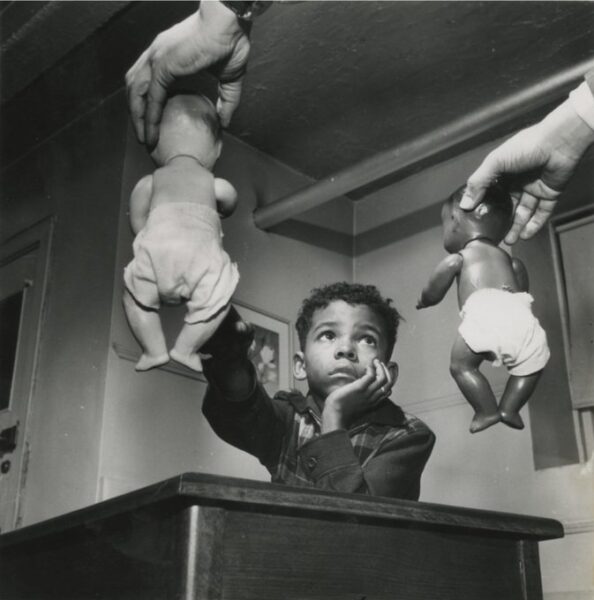
Howard U. Acquires Trove of Gordon Parks Photos
“At the start of his prolific and influential career, photographer Gordon Parks documented everyday life in D.C., including events and students at Howard University,” Peggy McGlone reported Monday for The Washington Post.
“Eighty years later, the historically Black university in the heart of the District has acquired one of the most comprehensive collections of Parks’s photographs. The trove of 252 images represents both his artistic achievement and his significance as a documentarian of African American life in the second half of the 20th century. Parks died in 2006 at the age of 93.
“The Gordon Parks Legacy Collection will be housed in the university’s Moorland-Spingarn Research Center, where students and faculty — from history, African American studies and the arts — can access the images for classwork, research, exhibitions and public programs. . . .”
Short Takes
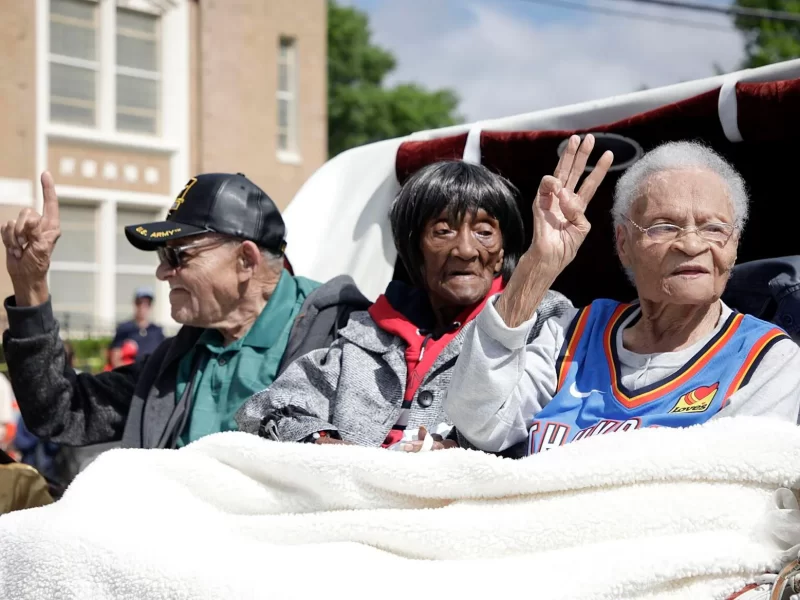
- “Ed and Lisa Mitzen, founders of the New York-based nonprofit Business for Good Foundation (BGF), presented a $1 million shared gift Wednesday to the three known living survivors of the 1921 Tulsa Race Massacre,” KJRH in Tulsa, Okla., reported. “Ed Mitzens said they were inspired to grant the $1 million after reading an article in The Washington Post by staff writer and Oklahoma native DeNeen L. Brown about the survivors’ plight, Gary Lee, a former colleague of Brown as the Post and now managing editor of the Oklahoma Eagle,” reported Monday. “Brown has written extensively about the race massacre – including the recent legal victory when Tulsa County District Judge Caroline Wall ruled that the survivors’ court case against the city of Tulsa and other defendants could proceed. . . .”
- “Fox News viewers are subjected to a constant torrent of lies, misleading statements, and half-truths as the network’s hosts, guests, and on-air personalities weave a comprehensive web of misinformation imbuing virtually all aspects of the outlet’s supposed ‘news’ operations,” Zachary Pleat, Chloe Simon, Gideon Taaffe, Madeleine Davison, Casy Wexler, Jasmine Geonzon, Cydney Hargis, Ryan Masri and Payton Armstrong reported Monday for Media Matters for America. “Media Matters has compiled a list of lies and false statements told and retold every single weekday during Fox’s purported ‘straight news’ programming throughout the first four full months of 2022. . . .”
 “Christian Cooper (pictured, by Jon Kroll/National Geographic), the bird-watching Black man who was the target of false accusations during an encounter in New York City’s Central Park in 2020, has a new TV show airing on National Geographic,” Jonathan Franklin reported Thursday for NPR. “The channel announced this week that Cooper, a lifelong bird-watcher, will host a series called Extraordinary Birder. In the series, Cooper will take viewers into the ‘wild, wonderful and unpredictable world of birds,’ according to National Geographic. . . .”
“Christian Cooper (pictured, by Jon Kroll/National Geographic), the bird-watching Black man who was the target of false accusations during an encounter in New York City’s Central Park in 2020, has a new TV show airing on National Geographic,” Jonathan Franklin reported Thursday for NPR. “The channel announced this week that Cooper, a lifelong bird-watcher, will host a series called Extraordinary Birder. In the series, Cooper will take viewers into the ‘wild, wonderful and unpredictable world of birds,’ according to National Geographic. . . .”
- Google is teaming with Scripps, one of the nation’s largest local TV station owners, to “fund a new Scripps Journalism Journey initiative to help print journalists make what it calls ‘mid-career’ transitions to ‘video-driven storytelling’ in broadcast news careers,” John Eggerton reported Tuesday for nexttv.com. “Those new jobs can include beat reporter, executive producer, editor/manager, documentary producer and copy editor. . . .”
- Last month, Factchequeado launched as a way to address misinformation in Latino and Spanish-speaking communities in the United States,” Hanaa’ Tameez reported Monday for Nieman Lab. “Founded by Laura Zommer of Chequeado in Argentina and Clara Jiménez Cruz of Maldita.es in Spain (both are fact-checking organizations), [the] idea for the venture emerged when Jiménez started noticing that misinformation in Spanish targeting U.S. Latinos was also reaching Spanish speakers in Spain. . . .”
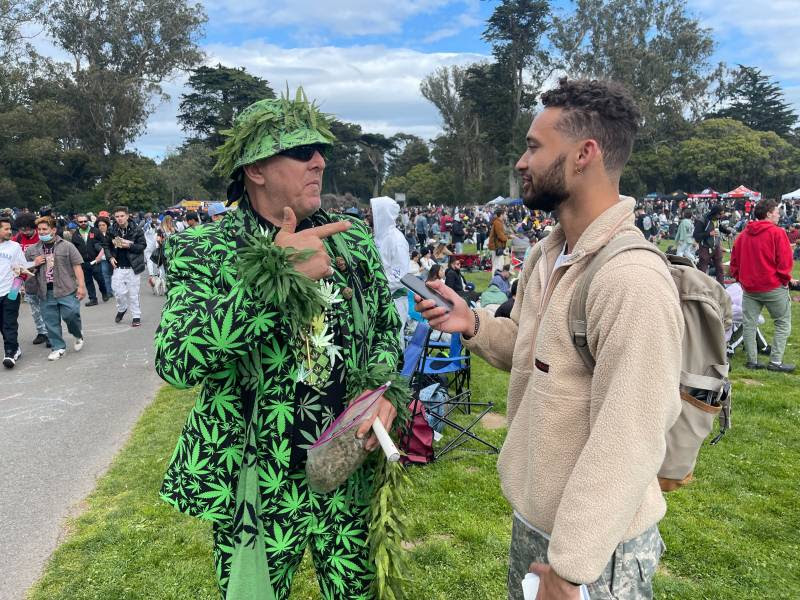
- In San Francisco, “We — Julian, the reporter, and Amaya, the photojournalist — were looking forward to collaborating on a photo essay that centered Black and Brown entrepreneurs and artists,” Julian E.J. Sorapuru and Amaya Edwards wrote Tuesday for KQED. “We wanted to help foster a sense of pride, and capture how folks who look like us have shaped California’s cannabis industry. Instead, as Black journalists, we experienced an angry harangue from a white man named Mike Barnes involving aggressive use of the n-word. In a follow-up conversation, he used it many more times, and doubled down on his right to say it. Barnes is a fixture in press coverage of Bay Area cannabis events, and appears to openly court media attention. We’ve decided to give it to him. . . .”
- The New York Times Tuesday announced five interns chosen “in partnership with the Ida B. Wells Society for Investigative Reporting at the University of North Carolina’s Hussman School of Journalism and Media in Chapel Hill. The society is funding the internship and will provide training and mentoring throughout the program. . . . ” Among them, Amudalat Ajasa will be a reporter on the Investigations desk. Francisco Gutierrez and Clay Morris will edit on our Print Hub, and Krista Nichols and Sarah Komar will work on the Flexible Editing desk.”
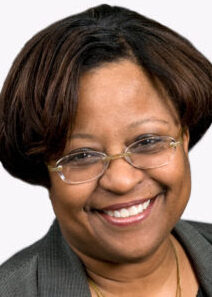 Robin Turner (pictured) is joining The Wall Street Journal as vice president of training, culture and community, Brent Jones, senior vice president of training, culture and community, announced Monday. Turner’s “career includes serving as a director of editorial diversity initiatives, copy desk chief, wire editor, publication editor, designer and copy editor at U.S. and international publications, including Politico, USA Today, the Journal and Ottaway Newspapers. In her most recent role at Politico, Robin designed and directed The Politico Fellows program and was a founding member of the organization’s signature journalism training institute, establishing a bicoastal presence in its ninth year. . . .”
Robin Turner (pictured) is joining The Wall Street Journal as vice president of training, culture and community, Brent Jones, senior vice president of training, culture and community, announced Monday. Turner’s “career includes serving as a director of editorial diversity initiatives, copy desk chief, wire editor, publication editor, designer and copy editor at U.S. and international publications, including Politico, USA Today, the Journal and Ottaway Newspapers. In her most recent role at Politico, Robin designed and directed The Politico Fellows program and was a founding member of the organization’s signature journalism training institute, establishing a bicoastal presence in its ninth year. . . .”
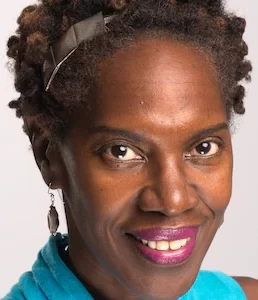 Vanessa Williams (pictured), a former president of the National Association of Black Journalists, will be promoted to a deputy National politics editor at The Washington Post, “steering coverage of voters and a changing American electorate,” Post editors announced Monday. “In this position, Vanessa will bring her keen instincts for untold stories to shape compelling and distinctive pieces about the shifting political terrain heading into this year’s midterm elections and the 2024 presidential election. She will help reporters execute illuminating coverage about what animates disparate groups of voters and how they decide which candidates reflect their values. She will also assist in our broader campaign and political report and work in close collaboration with the newly formed Democracy team, helping shape coverage of what Americans experience at the polls. . . .”
Vanessa Williams (pictured), a former president of the National Association of Black Journalists, will be promoted to a deputy National politics editor at The Washington Post, “steering coverage of voters and a changing American electorate,” Post editors announced Monday. “In this position, Vanessa will bring her keen instincts for untold stories to shape compelling and distinctive pieces about the shifting political terrain heading into this year’s midterm elections and the 2024 presidential election. She will help reporters execute illuminating coverage about what animates disparate groups of voters and how they decide which candidates reflect their values. She will also assist in our broader campaign and political report and work in close collaboration with the newly formed Democracy team, helping shape coverage of what Americans experience at the polls. . . .”
 Gray Television, Inc. has named Ron Bartholomew (pictured) as general manager of WNDU, the NBC affiliate in South Bend, Ind., the company announced May 13. “Ron is an executive and entrepreneur with more than 20 years of management experience across multiple media and sales organizations. He is passionate about constructing talented teams with diverse backgrounds. His teams are focused on supporting community and building strong business partnerships. . . . For the past three years, Ron has successfully guided the sales efforts of WMC Television, Gray’s NBC Affiliate in Memphis, Tennessee, as the station’s director of sales. . . .”
Gray Television, Inc. has named Ron Bartholomew (pictured) as general manager of WNDU, the NBC affiliate in South Bend, Ind., the company announced May 13. “Ron is an executive and entrepreneur with more than 20 years of management experience across multiple media and sales organizations. He is passionate about constructing talented teams with diverse backgrounds. His teams are focused on supporting community and building strong business partnerships. . . . For the past three years, Ron has successfully guided the sales efforts of WMC Television, Gray’s NBC Affiliate in Memphis, Tennessee, as the station’s director of sales. . . .”
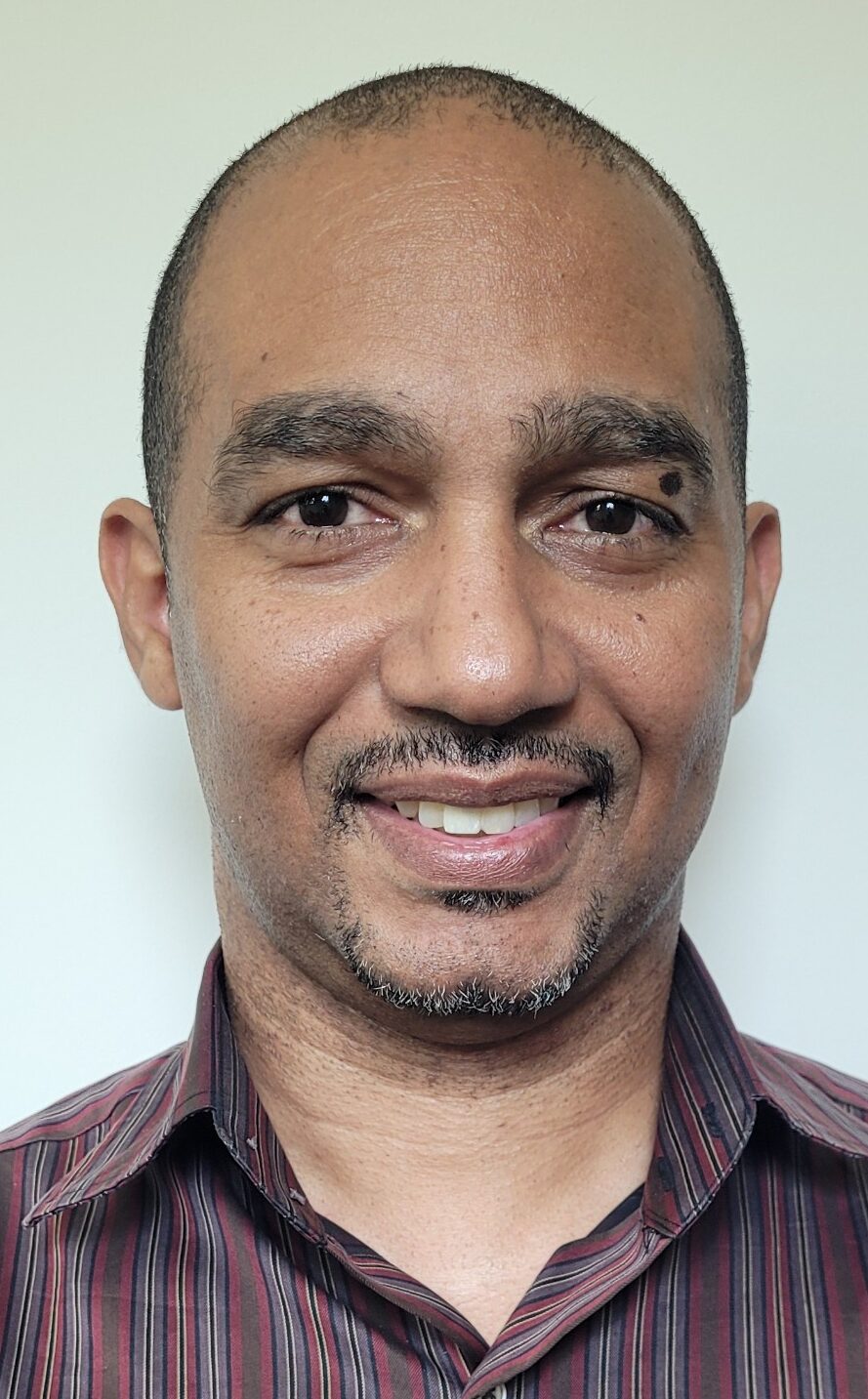 Gary Estwick (pictured), news director at the Murfreesboro (Tenn.) News Journal, is “joining the Nashville team as content manager overseeing the Breaking News/Trending teams as well as our communities reporters in Williamson and Wilson counties, Michael Anastasi, Nashville-based regional director for the USA Today Network, told staffers. “Gary also will oversee our newsroom-wide reporting around race and culture.
Gary Estwick (pictured), news director at the Murfreesboro (Tenn.) News Journal, is “joining the Nashville team as content manager overseeing the Breaking News/Trending teams as well as our communities reporters in Williamson and Wilson counties, Michael Anastasi, Nashville-based regional director for the USA Today Network, told staffers. “Gary also will oversee our newsroom-wide reporting around race and culture.
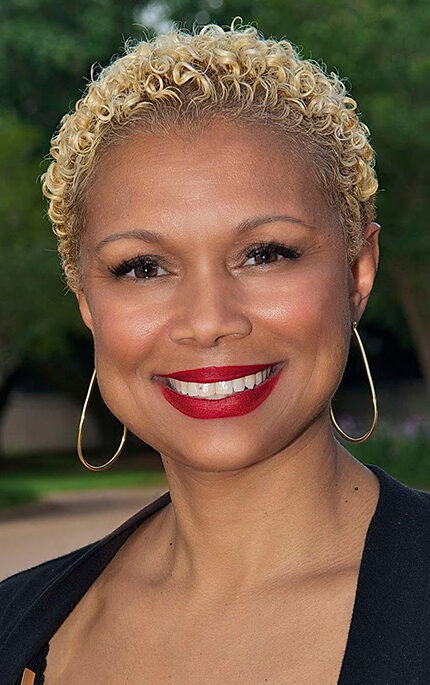 “Rockell Brown Burton (pictured), an experienced academic leader and accomplished researcher with a passion for cultivating impactful, mutually beneficial relationships, has been named Associate Dean of Inclusivity, Diversity, Equity and Accessibility at the Newhouse School,” Wendy S. Loughlin reported Tuesday for the Syracuse University journalism school. “After a national search, she was chosen from a pool of more than 50 applicants. . . .”
“Rockell Brown Burton (pictured), an experienced academic leader and accomplished researcher with a passion for cultivating impactful, mutually beneficial relationships, has been named Associate Dean of Inclusivity, Diversity, Equity and Accessibility at the Newhouse School,” Wendy S. Loughlin reported Tuesday for the Syracuse University journalism school. “After a national search, she was chosen from a pool of more than 50 applicants. . . .”
- The National Newspaper Publishers Association, the trade organization for the Black press, has opposed banning menthol in cigarettes, but posted an opinion piece Tuesday from the Oakland (Calif.) Post with the headline, “In a Major Win for Black Health, FDA Publishes Proposed Rule Banning Menthol Flavored Cigarettes and Flavored Cigars.” It was authored by Keisha Brown, a media relations liaison for the African American Tobacco Control Leadership.
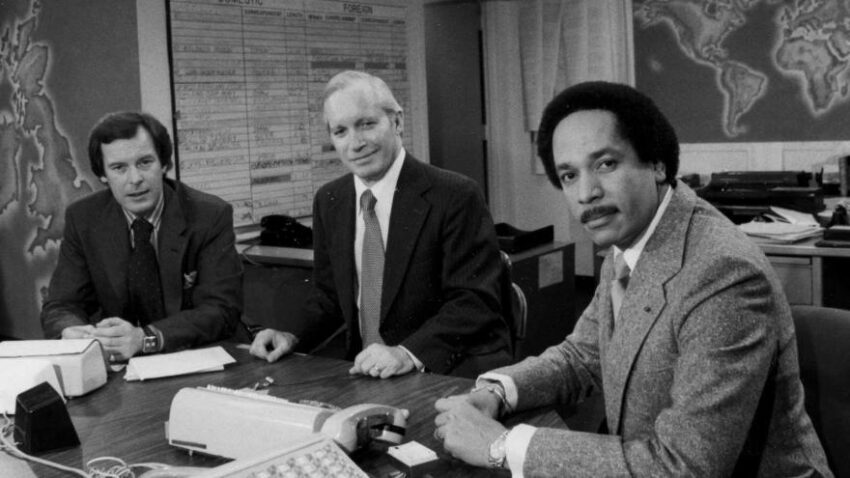
- For those who don’t know what came before: “Pioneering journalist Max Robinson made history in the late 1970s after he became the first Black news anchor to co-host ABC World News Tonight alongside Frank Reynolds and Peter Jennings,” Shannon Dawson wrote May 4 for NewsOne. “Donning dapper three-piece suits, a kept afro, and a rich voice, Robinson captivated viewers at home with his charming demeanor and brave views on racism and equality following the civil rights movement. ‘It was a breakthrough,’ said Clarence Page, a columnist at the Chicago Tribune who worked alongside Robinson to write his autobiography, according to the New York Times. ‘Max helped open the door for a lot of other journalists.’ . . .”
- May 19 “would have been the 97th birthday of the man known as Malcolm X. He is most widely associated with his work in Harlem, but the Bay Area mattered to him,” KALW in San Francisco wrote Wednesday in introducing a piece by news editor Sunni Khalid. “He gave speeches in San Francisco, and Oakland, and the University of California-Berkeley. And it’s here where [Malcolm] X cemented an important friendship with Egyptian diplomat Tahseen Bashir. For Bashir, Malcolm X was the rare leader who had more questions than answers.” Khalid, who reported from Egypt for three years as NPR’s Cairo bureau chief, wrote on LinkedIn, “After 20 years, I finally shared part of my interview with my late mentor, Tahseen Bashir, one of the most insightful observers I ever had the honor and privilege to know.”
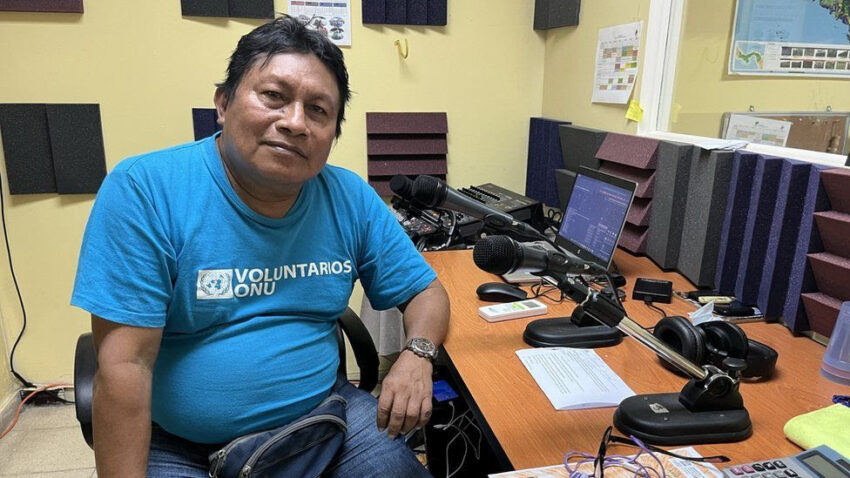
- “Panama’s first indigenous people’s radio station, Voces Originarias Panamá, is now broadcast across the country,” Grace Livingstone reported Wednesday for the BBC. “Panama has almost half a million indigenous people, who make up 12% of the population, and speak seven different languages. Dad Neba, the station’s coordinator, says it’s time they had a voice. ‘Historically we’ve been bombarded with information from outside, and now we want to speak for ourselves,’ he says. ‘We want to show the needs of our peoples.’ . . .”
- For World Press Freedom Day on May 3, LatAm Journalism Review asked journalists in the region why press freedom is important to them, or to respond to questions of press freedom in the digital era, the theme of the May 2-5 UNESCO World Press Freedom Day Global Conference.
- “There’s a little bit of cynicism from the Mexican public in saying to the Mexican media ‘why are you giving so much coverage to 20 dead people in a bombing in Kyiv, when there’s been just 20 people that were killed in a shootout yesterday in Michoacán,” said Dr. Manuel Alejandro Guerrero, department of communications director for Universidad Iberoamericana,” Samantha Greyson reported May 2 for LatAm Journalism Review.
- “We are alarmed by the passage of Cuba’s new penal code, which further criminalizes the work of independent journalists on the island by banning foreign funding and puts their existence and sustainability at dire risk,” Ana Cristina Núñez, senior researcher for Latin American and the Caribbean at the Committee to Protect Journalists, said Monday.
- In Lebanon Sunday, video journalist Hussein Bassal “was beaten and kicked by dozens of supporters of the Hezbollah political party and militant group while he was covering the parliamentary elections in the southern village of Ansar, according to a video and tweet by his employer, a video posted on social media of the journalist after the attack, the Lebanese Association for Democratic Elections, [and] a local NGO that documented the attack, the Committee to Protect Journalists said Tuesday.
- Ethiopia expelled Economist correspondent Tom Gardner after the revocation of his press accreditation on May 13, the Committee to Protect Journalists said Monday. “Gardner’s expulsion came almost a year after Ethiopian authorities similarly expelled New York Times reporter Simon Marks and within the context of a deteriorating press freedom climate in which authorities have arbitrarily arrested numerous members of the press amid the ongoing civil war,” the Committee to Protect Journalists said Monday.
To subscribe at no cost, please send an email to journal-isms+subscribe@groups.io and say who you are.
Facebook users: “Like” “Richard Prince’s Journal-isms” on Facebook.
Follow Richard Prince on Twitter @princeeditor
Richard Prince’s Journal-isms originates from Washington. It began in print before most of us knew what the internet was, and it would like to be referred to as a “column.” Any views expressed in the column are those of the person or organization quoted and not those of any other entity. Send tips, comments and concerns to Richard Prince at journal-isms+owner@
View previous columns (after Feb. 13, 2016).
View previous columns (before Feb. 13, 2016)
- Diversity’s Greatest Hits, 2018 (Jan. 4, 2019)
- Book Notes: Is Taking a Knee Really All That? (Dec. 20, 2018)
- Book Notes: Challenging ’45’ and Proudly Telling the Story (Dec. 18, 2018)
- Book Notes: Get Down With the Legends! (Dec. 11, 2018)
- Journalist Richard Prince w/Joe Madison (Sirius XM, April 18, 2018) (podcast)
- Richard Prince (journalist) (Wikipedia entry)
- February 2018 Podcast: Richard “Dick” Prince on the need for newsroom diversity (Gabriel Greschler, Student Press Law Center, Feb. 26, 2018)
- Diversity’s Greatest Hits, 2017 — Where Will They Take Us in the Year Ahead?
- Book Notes: Best Sellers, Uncovered Treasures, Overlooked History (Dec. 19, 2017)
- An advocate for diversity in the media is still pressing for representation, (Courtland Milloy, Washington Post, Nov. 28, 2017)
- Morgan Global Journalism Review: Journal-isms Journeys On (Aug. 31, 2017)
- Diversity’s Greatest Hits, 2016
- Book Notes: 16 Writers Dish About ‘Chelle,’ the First Lady
- Book Notes: From Coretta to Barack, and in Search of the Godfather
- Journal-isms’ Richard Prince Wants Your Ideas (FishbowlDC, Feb. 26, 2016)
- “JOURNAL-ISMS” IS LATEST TO BEAR BRUNT OF INDUSTRY’S ECONOMIC WOES (Feb. 19, 2016)
- Richard Prince with Charlayne Hunter-Gault, “PBS NewsHour,” “What stagnant diversity means for America’s newsrooms” (Dec. 15, 2015)
- Book Notes: Journalists Follow Their Passions
- Book Notes: Journalists Who Rocked Their World
- Book Notes: Hands Up! Read This!
- Book Notes: New Cosby Bio Looks Like a Best-Seller
- Journo-diversity advocate turns attention to Ezra Klein project (Erik Wemple, Washington Post, March 5, 2014)
When you shop @AmazonSmile, Amazon will make a donation to Journal-Isms Inc. https://t.co/OFkE3Gu0eK
— Richard Prince (@princeeditor) March 16, 2018
Comments
In Peril Again
Yet again in America, Black Americans are under peril because of the hue of our skin. Black Americans, like others in America, encounter a variety of threats and concerns surrounding issues of safety and fear. Many, of course, don’t have our legacy of being enslaved in America.
It is factual that in far too many Black American venues and zip codes the violence is internal, personal and destructive. Yet with regard to race, our nation has a long and ugly violent legacy of violating sacred places and venues of Black Americans, from churches to places of entertainment and shopping centers.
This latest threat and peril is historical and imbedded into the legacy of America, where Black lives were defined as unworthy of dignity. Legally, per our most sacred document, the Constitution, Black Americans were fractional human beings. Efforts by Insurrectionists are just as dangerous and destructive as those perpetrators of domestic violence against Black Americans.
Slavery brought with it fugitive slave laws, and the origins of the modern day police in America. Recently our capital of the USA celebrated a holiday where slave owners were paid to free us and the IRS pushed back tax returns in homage to this racist celebration in our nation’s capital.
We must confront yet another period in our country where Black Americans are under siege, in peril and in mortal fear for our lives. We must craft a series of national laws, national policies and plans that can be implemented in a timely way to protect Black Americans.
The FBI has issued warnings to religious facilities, historical sites as well as sporting events; as such I expect Black Americans should be given the same threat level alerts, given that our visibility is more apparent and makes us more in peril than any other group or collective in America since slavery.
In the post-industrial world, we have cyber marketplaces that barter in electronic streams of hate-driven commodities. These same instruments of commerce are used to cultivate and harvest hate and violence that frequently targets Black Americans. These websites weaponize adherents to become lethal human drone missiles with targeted scripts to kill and maim, frequently minorities, especially Black folks.
The way forward here is to look both ways. Events of the past inform present-day currencies. Targeted bandwidths must have the ability and then capacity to protect and save the lives of our families and ourselves.
The imperative here is to not only survive this perilous era of America, but to reject, defeat and conquer any and all perils thtn endanger our humanity, including those who seek to become Insurrectionists and those that are contaminated with hate on a mission to destroy.
Greg Thrasher
Director
Plane Ideas
Alternative Think Tank
Detroit/DC
Planeidea@msn.com

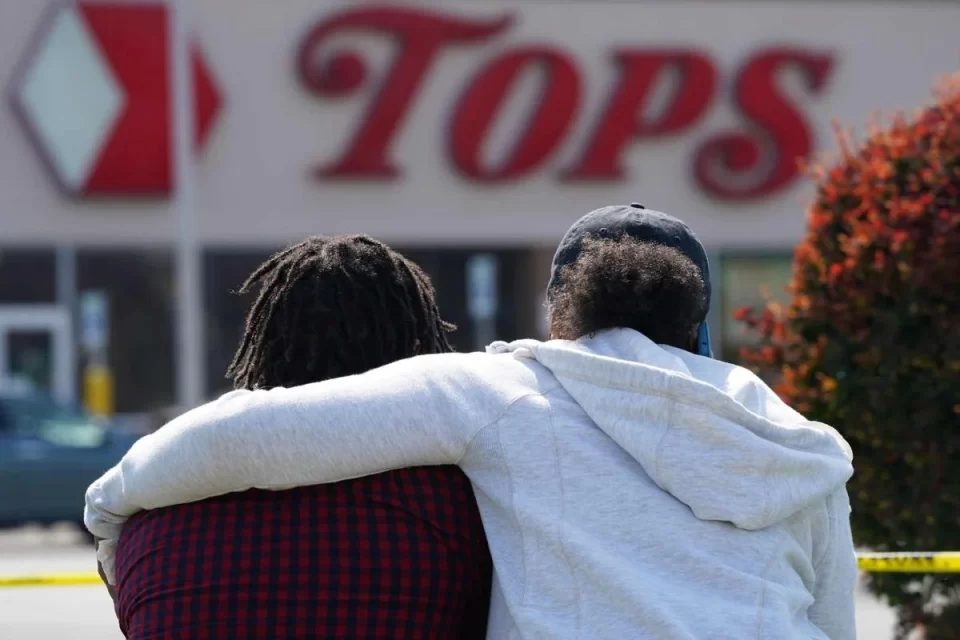
1 comment
In Peril Again
Yet again in America, Black Americans are under peril because of the hue of our skin. Black Americans, like others in America, encounter a variety of threats and concerns surrounding issues of safety and fear. Many, of course, don’t have our legacy of being enslaved in America.
It is factual that in far too many Black American venues and zip codes the violence is internal, personal and destructive. Yet with regard to race, our nation has a long and ugly violent legacy of violating sacred places and venues of Black Americans, from churches to places of entertainment and shopping centers.
This latest threat and peril is historical and imbedded into the legacy of America, where Black lives were defined as unworthy of dignity. Legally, per our most sacred document, the Constitution, Black Americans were fractional human beings. Efforts by Insurrectionists are just as dangerous and destructive as those perpetrators of domestic violence against Black Americans.
Slavery brought with it fugitive slave laws, and the origins of the modern day police in America. Recently our capital of the USA celebrated a holiday where slave owners were paid to free us and the IRS pushed back tax returns in homage to this racist celebration in our nation’s capital.
We must confront yet another period in our country where Black Americans are under siege, in peril and in mortal fear for our lives. We must craft a series of national laws, national policies and plans that can be implemented in a timely way to protect Black Americans.
The FBI has issued warnings to religious facilities, historical sites as well as sporting events; as such I expect Black Americans should be given the same threat level alerts, given that our visibility is more apparent and makes us more in peril than any other group or collective in America since slavery.
In the post-industrial world, we have cyber marketplaces that barter in electronic streams of hate-driven commodities. These same instruments of commerce are used to cultivate and harvest hate and violence that frequently targets Black Americans. These websites weaponize adherents to become lethal human drone missiles with targeted scripts to kill and maim, frequently minorities, especially Black folks.
The way forward here is to look both ways. Events of the past inform present-day currencies. Targeted bandwidths must have the ability and then capacity to protect and save the lives of our families and ourselves.
The imperative here is to not only survive this perilous era of America, but to reject, defeat and conquer any and all perils thtn endanger our humanity, including those who seek to become Insurrectionists and those that are contaminated with hate on a mission to destroy.
Greg Thrasher
Director
Plane Ideas
Alternative Think Tank
Detroit/DC
Planeidea@msn.com